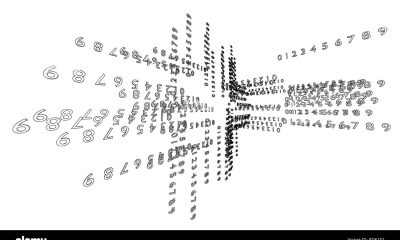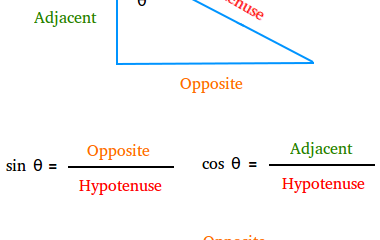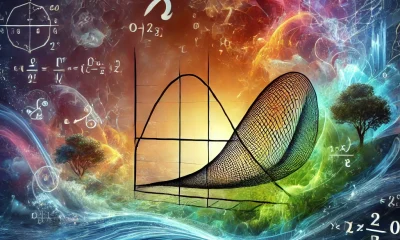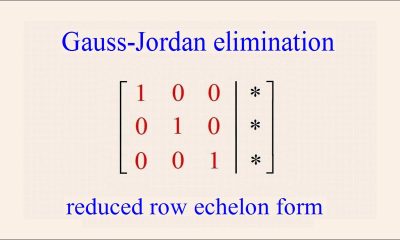Partial fraction formula: Integration by Partial Fractions is a method for integrating rational functions that are fractions of polynomials. The goal is to reduce a complex rational function to simpler fractions that are easier to integrate.
Steps for Partial Fraction Integration:
1. Check to see if the degree of the numerator is less than that of the denominator:
If the degree of the numerator is greater than or equal to the degree of the denominator, use long division to rewrite the integral so that the degree of the numerator is less than that of the denominator.
2. Factor the denominator, if possible:
Try to break the denominator down into irreducible elements (linear or quadratic).
3. Set up the partial fractions: Depending on the factorization of the denominator, break the rational function into simpler fractions:
- For linear factors (x-a) , use the form

- Use the form for repeated linear components (x−a)^n

- For quadratic factors that cannot be reduced (x^2+bx+c) use the form

- Use the following expression for repeated irreducible quadratic factors: (x^2 + bx + c)^n

4. Solve for the constants: After setting up the partial fractions , multiply both sides of the equation by the common denominator and equate coefficients of like powers of x to solve for the constants.
5. Integrate the simpler fractions: After determining the constants, integrate each term separately.
Partial fraction formula Partial fraction formula
1. Linear factors in the denominator
If the denominator consists of different linear factors:

Example:

Steps
- Decompose

2. Solve for A and B.
3. Integrate each term.

Solution: A=1, B=1


2. Repeated Linear Factors
If the denominator includes repeated linear factors:

Example:

Steps
- Decompose

2. Integrate each term.


Solution:

3. Quadratic Factors
If the denominator includes an irreducible quadratic factor:

Example:

- For irreducible x^2+4, rewrite:

2. Solve for coefficients if needed (A = 0, B= 1)
3. Integrate using

Solution:

4. Repeated Quadratic Factors
For several irreducible quadratic factors:

Example:

Steps
- Decompose

2. Solve for coefficients.
3. Integrate each term.


Solution:

5. Mixed Linear and Quadratic Factors
When the denominator contains both linear and quadratic factors:

Example:

Steps
- Decompose

2. Solve for A, B, and C.
3. Integrate each term separately.
Example :

Step 1 : First, configure the partial fractions.
As (x+1)^2 (x−2), the denominator is already factored as (x+1)^2 (x−2). The integrand will therefore be represented as a sum of partial fractions of the following form:

Step 2: Multiply both sides by (𝑥+1)^2 ( 𝑥 − 2 )

Step 3: Expand the right side.
Next, expand each phrase on the right-hand side:



Thus we get

Simplifying




Step 4: Compare the coefficients.
We equate the coefficients of powers of 𝑥 on both sides of the equation.
- Coefficient of x^2: A+C=2
- Coefficient of x: A+B+2C=0
- Constant term: −2A−2B+C=−1
Step 5: solve the system of equations.
We will now solve the system of equations:
- A+C=2
- -A +B+2C=0
- -2A-2B+2C=-1
From equation 1
C=2-A
Substitute C=2−A into equations (2) and (3):
From equation 2



From equation 3



Now solve equations (4) and (5).
Based on equation (4):
𝐵 = 3 𝐴 − 4
Substitute B=3A−4 into equation (5):




Now substitute A=11/9 inti C = 2-A

Finally , substitute A = 11/9 into B = 3A-4 :

Step 6: Write a partial fraction decomposition.
We currently have:

Step 7: Integrate the terms.
We may now integrate each phrase separately.




Thus, the solution is:

This is the final answer.
Practice problems
Solve the integral using partial fraction
1.

2.

3.

4.

5.



 algebra1 month ago
algebra1 month ago
 algebra1 month ago
algebra1 month ago
 algebra2 months ago
algebra2 months ago
 algebra1 month ago
algebra1 month ago
 geometry1 month ago
geometry1 month ago
 calculus2 months ago
calculus2 months ago
 algebra2 months ago
algebra2 months ago
 algebra2 months ago
algebra2 months ago





































































